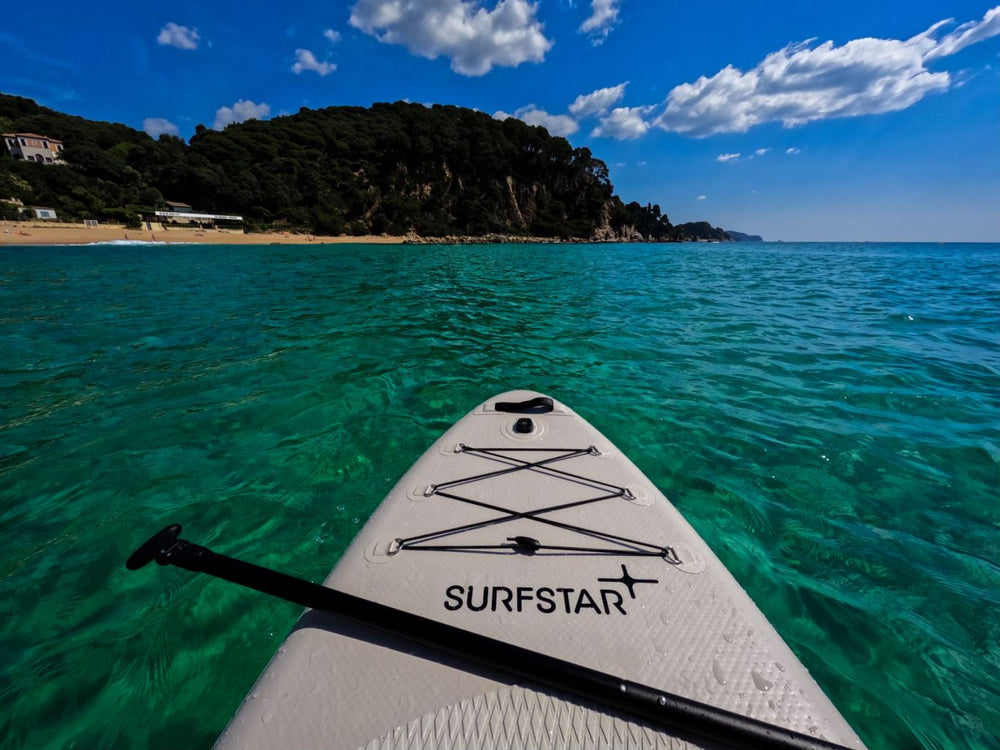What to expect when paddling in the Spring?
The Spring can be a tricky time for paddleboarding. While it can make for some beautiful adventures, the weather can be somewhat tricky. In many parts of the world, the Spring means that it’s hot outside one day and cold the next. Or, sometimes, the temperature shifts by the hour. It could mean clear skies in the morning and a rain shower in the afternoon. Basically, if you are going to go paddling in the Spring, you want to be prepared.
The most important thing to remember is to wear the correct clothing, but there are also some other things you’ll want to consider before hopping on your board in the Spring. Check out the below before you venture out, especially if you’re a beginner.
Inspect Your Paddleboard
If you live in an area where it gets colder during the winter months, then you might have taken some time off from paddleboarding. Or, maybe you paddled all the way through the year. Either way, the spring is a great time to take your paddle board outside and inspect it. Look for any worn or missing pieces, as well as any damage that might impact its performance. By checking these things early, you can get them repaired ASAP, instead of having to get in line with all the other people who waited until the summer to get their board ready for the season.
Get in Touch with Your Physical Fitness
The winter can often be a period of hibernation, especially when it’s super cold outside. If you didn’t keep yourself in tip-top physical shape, you’re not alone. However, it’s important to remember just how much strength and balance it takes to paddle board. That’s not to say that you shouldn’t get back out on the water, but maybe take some time to familiarize yourself with your board again.
Also consider choosing some easier, less strenuous routes for your first few paddling adventures. If you find yourself breezing through, great! Then you’re totally ready to get back to peak performance. But, you might be surprised to find that you need a few practice runs before you feel comfortable paddling at the level you were last year. Either is totally fine, but best to take it slow so that you can keep yourself as safe as possible.
Wear Layers
As mentioned above, Spring is a season that often brings transitional and unpredictable weather. This means that it’s all about wearing layers that you can take off or remove as the weather changes. But this doesn’t have to be overcomplicated. The most basic advice I can give is to simply wear the clothes that you would wear in the summer, and then add some layers. Maybe a long sleeve shirt and then a waterproof jacket.
If it’s going to get particularly cold, you might consider another jacket under your waterproof layer. Then, if you begin to get hot throughout the day — either as you continue exercising or as the temperature rises — you can remove as many layers as you need to until you're comfortable again.
Check the Weather Before You Go
Speaking of the weather, don’t go in blind. You should always check the weather before you go paddling, but especially during seasons where there is the potential for major transitions throughout the day. If it’s going to start pouring rain halfway through your paddling, you should probably know that. Similarly, if the temperature is going to drop significantly, then you should also be aware of that.
Sure, things can always change. But, having an idea of how the weather is supposed to play out over the course of the day will help you make sure that you have everything you need to make your time on the water enjoyable. The last thing you want is to be blindsided or have your trip ruined because the weather shifts suddenly.
Operate as if the Water is Cold
This is one of the best ways to keep yourself safe when paddling. When assuming the water is cold, you are likely to make less risky decisions that might result in you being either submerged in the water or soaking wet for a longer period of time. First of all, this means choosing clothes that will dry quickly. The last thing you want is to be hit with cold air after you’ve been in the water (whether willingly or because you fell off your board).
Opt for lightweight, sport materials that are meant to get wet and are likely to be relatively dry within a few minutes in the sun. It will keep you safer by helping regulate your body temperature, and it will also help keep you from the truly uncomfortable experience of having to spend the rest of the day in soaking wet clothes.
Not only would being cold and wet be uncomfortable, it can also be dangerous. The last thing you want is to make yourself sick (or, even worse, develop hypothermia). In addition to your clothing, this also means opting for less tricky routes, where you might be more likely to fall off your board and injure yourself. Being stuck in the cold water can be even more dangerous. And, as always, bring a buddy! Should anything happen, you’ll be safer with another person there.
Conclusion
In essence, paddling in the Spring isn’t all that different than paddling at any other time of the year. The number one thing to remember is that the weather is more transitional and, therefore, can be pretty unpredictable. While that shouldn’t be a huge issue, it is something to always be wary of when you venture out on the water. At the end of the day, the goal is to keep yourself safe while also enjoying your next paddling adventure!





Leave a comment